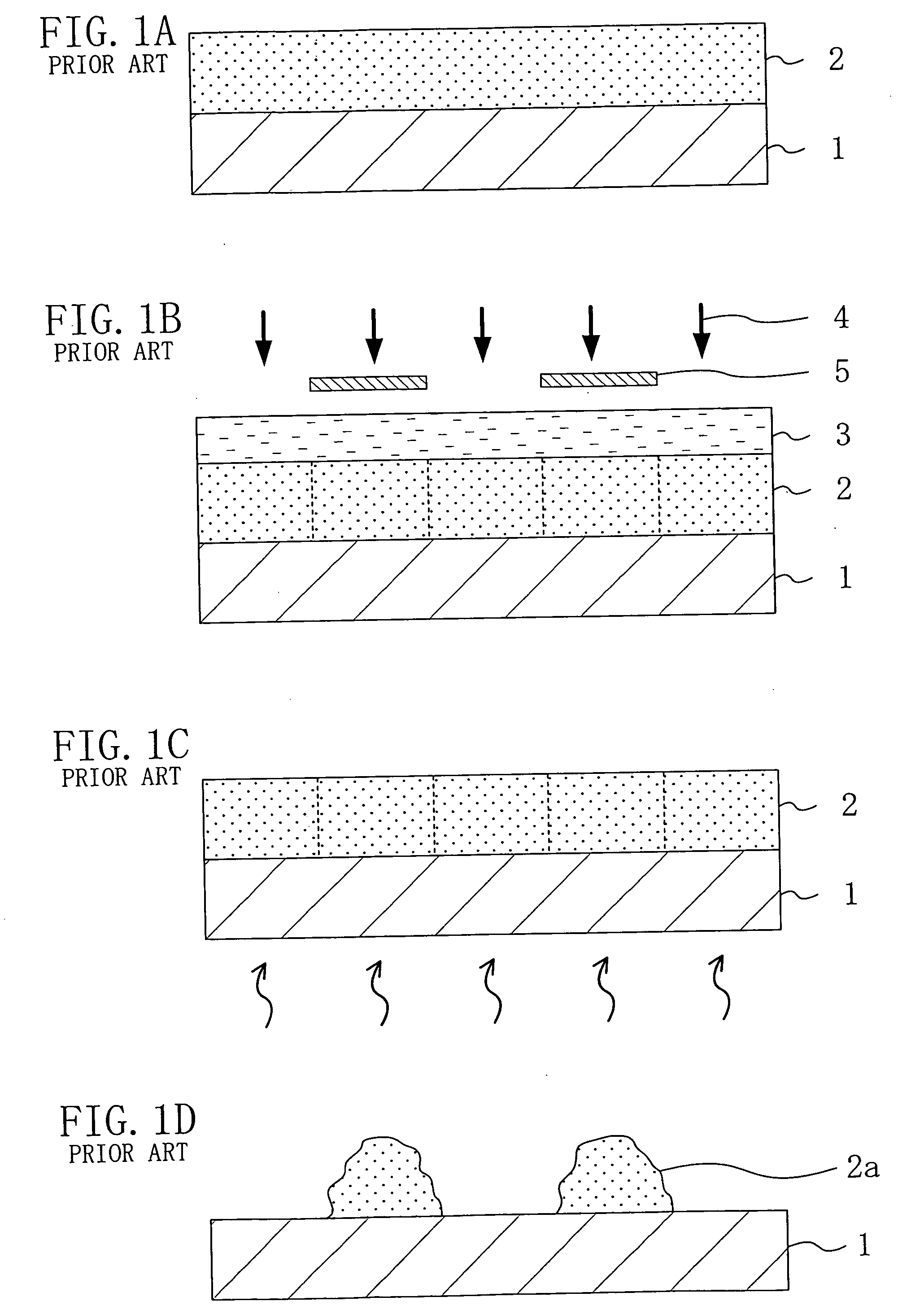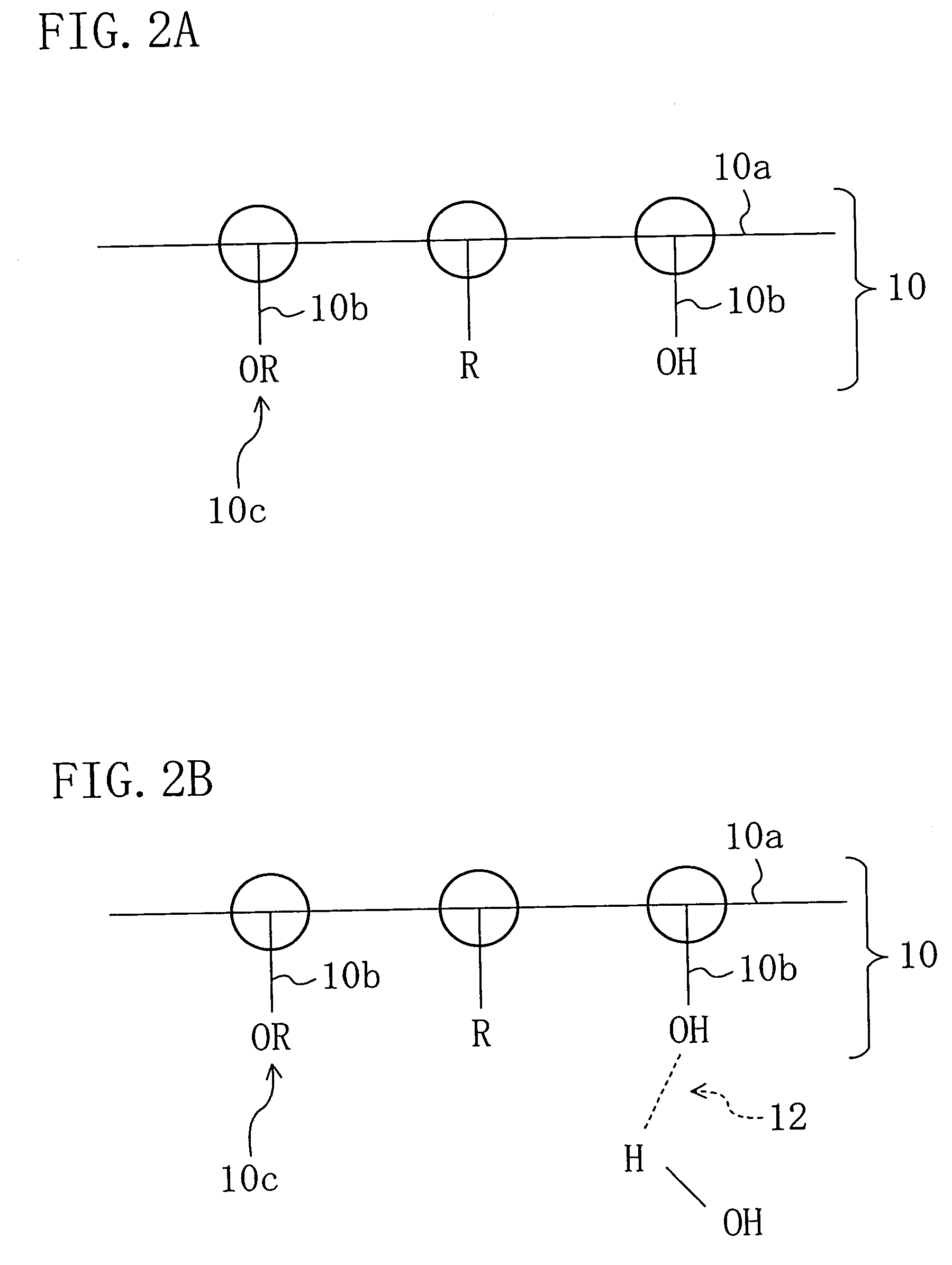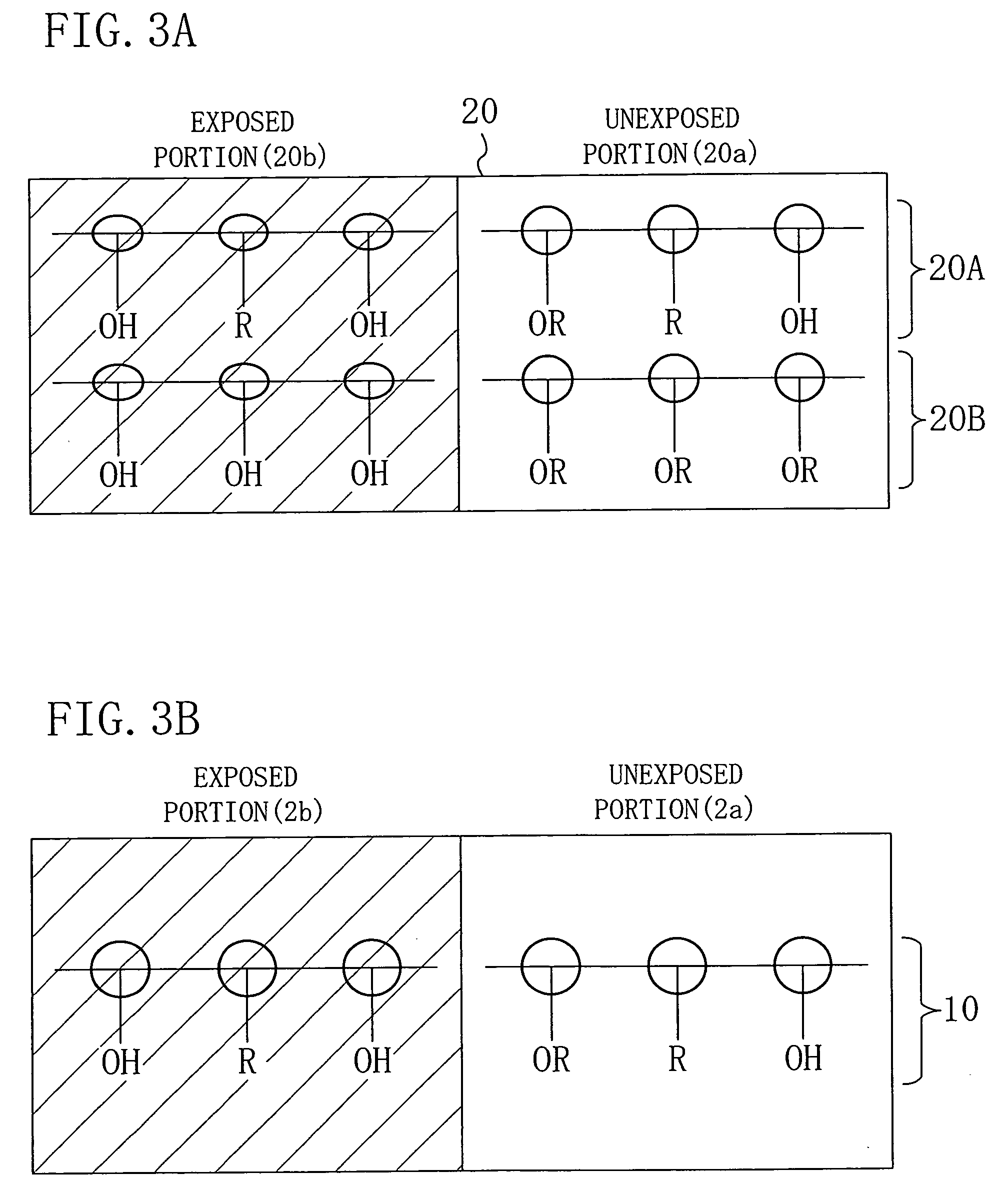Resist material and pattern formation method
a resist film and pattern technology, applied in the field of resist material and pattern formation method, can solve the problems of disadvantageous lowering of semiconductor device manufacturing process productivity and yield, easy dissolution of the unexposed portion of the resist film b>2/b> in the developer, etc., and achieves the effect of reducing contrast, remarkably improving the solubility of the exposed portion 20b in the developer
- Summary
- Abstract
- Description
- Claims
- Application Information
AI Technical Summary
Benefits of technology
Problems solved by technology
Method used
Image
Examples
embodiment 1
[0068] A pattern formation method according to Embodiment 1 of the invention will now be described with reference to FIGS. 4A through 4D.
[0069] First, a positive chemically amplified resist material having the following composition is prepared:
First base polymer: poly((norbornene-5- 2 gmethylenehexafluoroisopropyl alcohol ethoxymethylether) (40 mol %) - (norbornene-5-methylenehexafluroispropyl alcohol)(60 mol %))Second base polymer: poly(2-methyl-2-adamantyl methacrylate) 0.3 gAcid generator: triphenylsulfonium triflate 0.06 gQuencher: triethanolamine0.002 gSolvent: propylene glycol monomethyl ether acetate 20 g
[0070] Next, as shown in FIG. 4A, the aforementioned chemically amplified resist material is applied on a substrate 101 so as to form a resist film 102 with a thickness of 0.35 μm.
[0071] Next, as shown in FIG. 4B, with an immersion liquid 103 of water provided between the resist film 102 and a projection lens 105 by, for example, a puddle method, pattern exposure is ca...
embodiment 2
[0075] A pattern formation method according to Embodiment 2 of the invention will now be described with reference to FIGS. 5A through 5D.
[0076] First, a positive chemically amplified resist material having the following composition is prepared:
Base polymer: poly((norbornene-5- 2 gmethylenehexafluoroisopropyl alcohol ethoxymethyl ether)(40 mol %) - (norbornene-5-methylenehexafluoroisopropylalcohol) (60 mol %))Compound protected by acid labile group: 2-methyl-2- 0.3 gadamantyl methacrylateAcid generator: triphenylsulfonium triflate 0.06 gQuencher: triethanolamine0.002 gSolvent: propylene glycol monomethyl ether acetate 20 g
[0077] Next, as shown in FIG. 5A, the aforementioned chemically amplified resist material is applied on a substrate 201 so as to form a resist film 202 with a thickness of 0.35 μm.
[0078] Next, as shown in FIG. 5B, with an immersion liquid 203 of water provided between the resist film 202 and a projection lens 205 by, for example, the puddle method, pattern ex...
embodiment 3
[0082] A pattern formation method according to Embodiment 3 of the invention will now be described with reference to FIGS. 6A through 6D.
[0083] First, a positive chemically amplified resist material having the following composition is prepared:
First base polymer: poly(norbornene-5- 2 gmethylenehexafluoroisopropyl alcohol)Compound protected by acid labile group: 2-methyl-2- 0.3 gadamantyl methacrylateSecond base polymer: poly(2-methyl-2-adamantyl methacrylate) 0.2 gAcid generator: triphenylsulfonium triflate 0.06 gQuencher: triethanolamine0.002 gSolvent: propylene glycol monomethyl ether acetate 20 g
[0084] Next, as shown in FIG. 6A, the aforementioned chemically amplified resist material is applied on a substrate 301 so as to form a resist film 302 with a thickness of 0.35 μm.
[0085] Next, as shown in FIG. 6B, with an immersion liquid 303 of water provided between the resist film 302 and a projection lens 305 by, for example, the puddle method, pattern exposure is carried out b...
PUM
| Property | Measurement | Unit |
|---|---|---|
| thickness | aaaaa | aaaaa |
| temperature | aaaaa | aaaaa |
| width | aaaaa | aaaaa |
Abstract
Description
Claims
Application Information
 Login to View More
Login to View More - R&D
- Intellectual Property
- Life Sciences
- Materials
- Tech Scout
- Unparalleled Data Quality
- Higher Quality Content
- 60% Fewer Hallucinations
Browse by: Latest US Patents, China's latest patents, Technical Efficacy Thesaurus, Application Domain, Technology Topic, Popular Technical Reports.
© 2025 PatSnap. All rights reserved.Legal|Privacy policy|Modern Slavery Act Transparency Statement|Sitemap|About US| Contact US: help@patsnap.com



